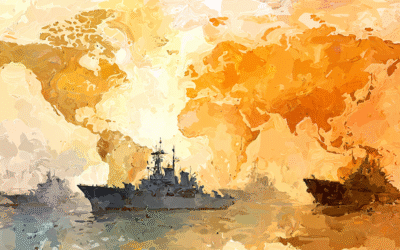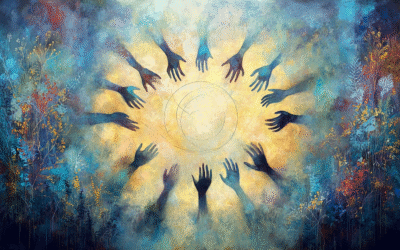In our world today, we stand at a pivotal crossroads where the potential for transformative change is palpable. This is a time of significant shifts—not just societal or technological, but fundamentally altering how we view and interact with the world and each other. Peace, in this context, is not merely the absence of conflict but a proactive, dynamic presence that must be cultivated, nurtured, and actively maintained. This essay explores the essential dual commitments to cultural and structural transformations that are necessary to foster a sustainable and pervasive culture of peace.
Understanding Peace as a Dynamic Process
At its core, peace is a substantive dynamic with its own identity, not simply the opposite of war or the absence of violence. It is an active state of harmony that involves ongoing efforts in personal, community, and global contexts. To truly understand peace, one must see it as a process—a series of actions and interactions that promote understanding, respect, and cooperation among individuals, groups, and nations.
The Role of Culture in Peace-Building
Cultural transformation is foundational to the realization of lasting peace. Cultures that glorify aggression and competition perpetuate conflict, whereas cultures that value empathy, cooperation, and understanding promote peace. Changing a culture requires changing the stories we tell ourselves about who we are and how we relate to others. This involves reevaluating our heroes, our myths, our symbols, and the narratives that shape our collective consciousness.
Education plays a critical role in this transformation. Through inclusive and comprehensive peace education programs, individuals can learn from an early age about conflict resolution, emotional intelligence, and the importance of diversity and inclusion. Such education should not be confined to formal schooling but should be part of community programs, media, and even corporate training initiatives.
Structural Changes to Support Peace
While cultural shifts are necessary, they must be complemented by structural transformations. This involves creating and maintaining institutions and systems that support peaceful coexistence. A significant aspect of structural change is the development and strengthening of international and local laws and institutions that uphold human rights and facilitate conflict resolution.
One innovative idea that has gained traction is the establishment of Ministries of Peace. These government bodies would be dedicated to peace-building initiatives, overseeing both the education and the implementation of peace strategies at national and international levels. They would work alongside other government departments to ensure that peace and conflict resolution are considered in all areas of policy, from urban planning and environmental protection to education and foreign affairs.
Community Engagement and Local Solutions
Effective peace-building must also operate at the community level. Communities need the tools and resources to address conflicts internally and to develop local solutions that reflect their unique cultural and historical contexts. This means supporting local leaders and organizations, fostering dialogue between conflicting groups, and providing platforms for the voices of the marginalized and disenfranchised.
Community policing is one example where peace-building can be effectively implemented at the local level. By promoting cooperation between police and the community, fostering mutual respect, and focusing on problem-solving rather than punitive measures, communities can become safer and more cohesive.
Global Cooperation and the Role of International Institutions
On the global stage, peace requires cooperation among nations and the support of robust international institutions like the United Nations. Global challenges such as climate change, terrorism, and pandemics cannot be solved by individual nations acting alone; they require collective action and shared responsibility.
International peace-building initiatives must prioritize diplomacy and economic development, helping to relieve the conditions that foster conflict. Economic disparity, resource scarcity, and social injustice are fertile grounds for conflicts. Addressing these issues through international aid, fair trade agreements, and sustainable development programs can significantly reduce tensions and build more stable, peaceful societies.
Leveraging Technology for Peace
In the digital age, technology offers new tools for promoting peace. Social media, for example, has the power to unite people across geographical and cultural divides, fostering a global community of peace advocates. However, technology can also exacerbate conflicts or be used as a tool for aggression and propaganda. Thus, regulating and guiding the use of technology to support peace rather than conflict is crucial.
Platforms that promote dialogue and understanding, digital peace education resources, and online mediation services can all play roles in reducing tensions and fostering understanding.
Measuring Progress and Maintaining Momentum
Building a culture of peace is an ongoing process that requires constant effort and vigilance. It is crucial to have clear metrics for measuring progress and mechanisms for maintaining momentum. This could include regular reports on peace and conflict, public forums for discussion about peace initiatives, and continuous updates to educational programs to keep them relevant and effective.
Cultivating peace requires a commitment to both cultural and structural transformation. It involves a comprehensive approach that integrates education, law, community engagement, international cooperation, and technology. Each of these elements plays a crucial role in building a sustainable culture of peace that can withstand the challenges of the modern world.
As global citizens, it is our collective responsibility to nurture and promote peace at every level—from our personal interactions to international relations. Only through concerted effort and shared commitment can we hope to achieve a truly peaceful world.
Sustaining Efforts Across Generations
The journey toward peace is not one that can be completed within a single generation. It requires a sustained, intergenerational effort that adapts to changing global landscapes and evolving societal needs. Each generation must take up the mantle from the previous one, learning from its successes and setbacks, and pushing forward with renewed vigor and adapted strategies.
Education systems must instill not only the knowledge but also the values of peace and cooperation in young minds. These values should be reinforced through community activities, media, and public policy, creating a consistent message that resonates through all layers of society.
Encouraging Inclusive Dialogue
Dialogue is at the heart of peace-building. It is through open, inclusive conversations that misunderstandings can be resolved, and common ground can be found. Encouraging dialogue that crosses cultural, religious, and political boundaries is essential for building a broader understanding and appreciation of diversity.
Initiatives like community forums, intercultural exchange programs, and collaborative projects can help facilitate this dialogue. Additionally, creating spaces where people can safely express their views and grievances without fear of repression or violence is crucial for maintaining an ongoing conversation about peace.
Accountability and Transparency
For structural changes to be effective, they must be implemented with accountability and transparency. Governments, corporations, and all institutions involved in the peace-building process must be held accountable for their actions and their contributions to either promoting peace or perpetuating conflict.
Transparency in how decisions are made, how resources are allocated, and how conflicts are managed is essential for building trust among communities and nations. Without trust, efforts toward peace can easily be undermined by suspicion and skepticism.
Harnessing Cultural Power
Culture is a powerful tool for promoting peace. Music, art, literature, and film can all convey messages of peace and unity, transcending language barriers and reaching people on an emotional level. Supporting artists and creators who focus on themes of peace and social justice can amplify the impact of cultural efforts toward peace-building.
Celebrating Successes
While the path to peace is undoubtedly fraught with challenges, it is also filled with victories—both big and small—that need to be celebrated. Recognizing and celebrating these successes can provide motivation and inspiration to continue the hard work of peace-building. Whether it’s a successful negotiation between conflicting parties, a reduction in crime rates due to community policing, or a powerful artistic portrayal of peace, these successes reinforce the value of the peace-building efforts and encourage continued support and engagement from the wider community.
Final Thoughts
The cultivation of peace is an ambitious but essential goal for humanity. As we navigate the complexities of the modern world, the commitment to cultural and structural transformation for peace must remain a priority. By understanding peace as a dynamic process, embracing the role of education, fostering global cooperation, leveraging technology, and maintaining open dialogues, we can hope to build a world where peace is not just an ideal but a lived reality. This vision of peace requires perseverance, collaboration, and above all, a deep belief in the potential for human societies to evolve towards greater harmony and understanding. Together, through persistent and unified efforts, we can transform the landscape of our world into one where peace flourishes across all nations and generations.










0 Comments